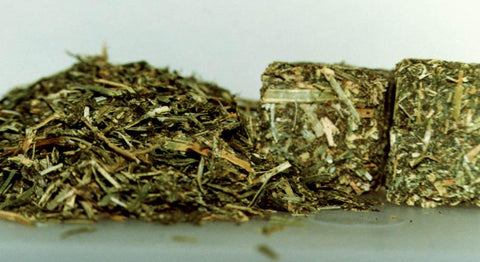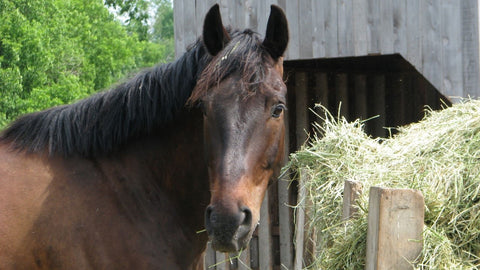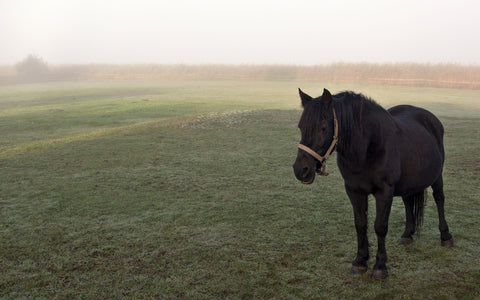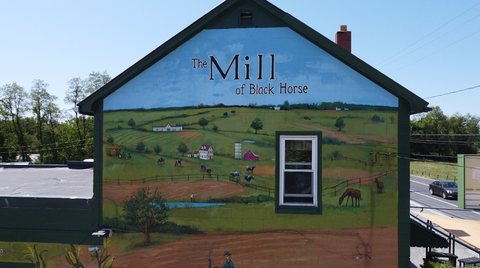Photo courtesy - University of Kentucky
Hay Alternatives can come in very handy to supplement or complete your horse’s diet. But when are they necessary and how do you incorporate them into your feeding program?
It is easy to get bogged down by all the options out there. Knowing if or when alternatives are desirable and which option may be best suited for your horse can get downright confusing. There are horses with bad dentition, malnourished horses that are being brought back to better health, and horses that need a little extra gut fill or a little more fiber but do not need additional feed. There are years when your hay load for the winter did not test as well as you had expected and there are times when hay is simply hard to come by. These are all common situations where hay alternatives can be helpful.
First, horses were designed to be grazers. Before horses were domesticated, how did they survive? What did they eat? Their digestive systems
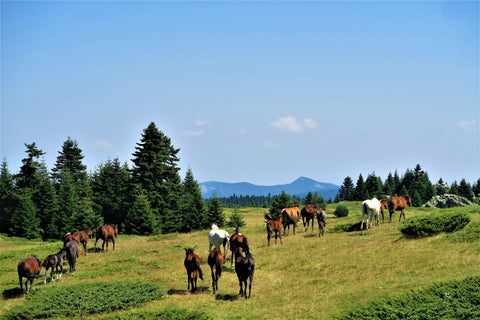
are designed to eat small, frequent meals filled with a lot of fiber which creates constant movement of feedstuff through the gut. They were created to be free-range, herd animals that spend their days grazing and moving about in search of the best forage. The continuous movement and slow, steady gut fill are vitally important to their overall health and wellbeing. Research has shown that horses should consume 1.5%-3% of their body weight in forage a day, thus making forage the foundation and biggest staple of a horse’s diet.
In modern times, most horses do not have the freedom to roam wherever they please in search of the best grazing grounds. Instead, they live in stalls and/or small paddocks. Some may have turnout in a large pasture for a few hours or even the entire day. Others have the option to live outdoors, however, the boundaries of their paddock or pasture limits them in the fresh forage they can consume. Consequently, due to limited fresh forage options in their enclosures or for other health reasons, we supplement with hay or other forage alternatives.
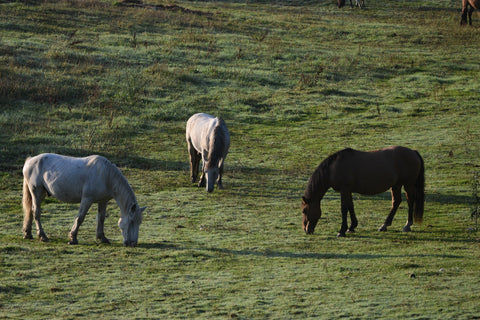
While each horse and situation can require a different approach, the traditional line of thinking is based on the length of the stem. When an abundance of fresh pasture forage is not available or not conducive to the horse’s individual health situation, the next option most owners rely on is baled hay; followed by chopped forage, then hay cubes and lastly hay pellets. This is all according to the length of the forage material.
You may have heard about the benefits of ‘long-stemmed’ hay. The ‘long stem’ (meaning 2 or more inches in stem length) is important for several reasons.
1. Long-stemmed hay requires more chewing
- More chewing simulates the horse’s natural behavior of grazing
-
Since the horse has an outlet for this natural grazing behavior, he/she is less likely to develop bad habits such as:

a. wood chewing
b. wind sucking
c. eating the bedding
d. stall pacing or weaving
2. More chewing produces more saliva. Saliva contains high levels of calcium and sodium bicarbonate which provide an added buffer against gastric acid in the stomach (helping to reduce the risk of gastric ulcers).
- Long-stemmed hay offers 2-plus inches of fibrous stem material to go through the digestive tract
- 2-plus inches of fibrous stem material in the stomach helps to create a mat, if you will, to help absorb and buffer acid (helping to reduce the risk of gastric ulcers)
- 2-plus inches of fibrous stem material is important for the beneficial microbes in the gut. They are more easily able to attach themselves to the longer stemmed material which, therefore, improves the horse’s ability to digest their food
- 2-plus inches of fibrous stem material also slows rate of passage of feed through the gut. When fed prior to grains the slowing of the feed material through the digestive tract allows the horse more time to better digest and absorb nutrients from their feed.
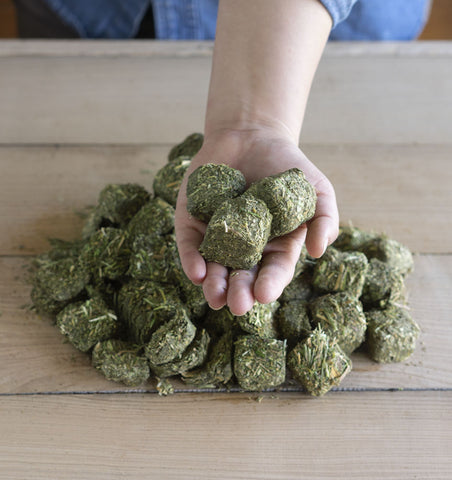
Fresh Pasture > Baled Hay > Chopped Forage > Hay Cubes > Hay Pellets
Each of the above listed feedstuffs has reduced length of chop. The shorter-stemmed feeds forfeit the above benefits of long-stemmed forage. So, why would anyone use anything but baled hay when adequate fresh forage is not available or not conducive to the horse’s individual health situation? There are many reasons why that are due to individual health situations. Ideally, we try to keep the least processed and longest stemmed forages in the feeding program to minimize health complications, however, there are situations where horses need a fine and highly processed forage substitute in the diet. These situations are more challenging and require more monitoring for best success.
If you have questions about which hay alternative may be the best option for your horse, please contact one of our Equine Specialists at The Mill.

